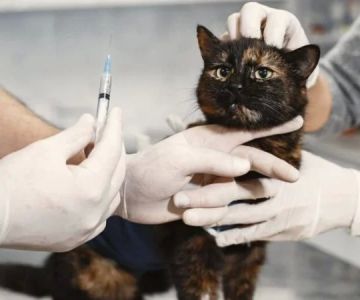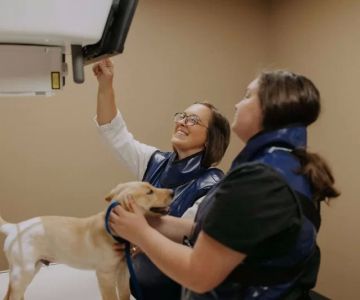How to Calculate Veterinary Drugs: A Step-by-Step Guide for Proper Dosage
- 1 - Introduction to Veterinary Drug Dosage Calculation
- 2 - Factors Affecting Veterinary Drug Dosage
- 3 - Basic Steps for Calculating Veterinary Drugs
- 4 - Common Errors to Avoid in Drug Calculation
- 5 - Case Studies and Examples in Veterinary Drug Calculation
1 - Introduction to Veterinary Drug Dosage Calculation
Calculating the correct dosage for veterinary drugs is a crucial skill for veterinarians, veterinary technicians, and anyone involved in animal care. Administering the wrong amount of medication can lead to ineffective treatment or even harm to the animal. This article will guide you through the process of calculating veterinary drug dosages, ensuring you can safely and accurately administer medications to animals.
When it comes to calculating veterinary drugs, precision is paramount. Whether you're dealing with a common medication for a household pet or a more specialized drug for an exotic animal, understanding how to calculate the correct dose is essential for optimal care and safety.
2 - Factors Affecting Veterinary Drug Dosage
Several factors must be considered when calculating the right dosage for veterinary drugs. These factors ensure that the treatment is tailored to the animal's specific needs:
- Animal's Weight: The animal's weight is one of the most important factors in calculating the drug dosage. Most veterinary drugs are dosed based on the animal's body weight, usually in milligrams or milliliters per kilogram of body weight.
- Age and Health Status: Older animals or those with certain health conditions may require adjusted dosages. For example, animals with kidney or liver disease may need lower doses of certain drugs.
- Drug Potency: Different drugs have different potencies. The more potent the drug, the lower the dose required to achieve the desired effect.
By taking these factors into account, you can ensure that each animal receives the correct drug dosage, minimizing the risk of adverse effects.
3 - Basic Steps for Calculating Veterinary Drugs
To accurately calculate veterinary drug dosages, follow these basic steps:
- Determine the drug’s concentration: Check the drug’s label for its concentration (e.g., 100 mg/mL). This tells you how much of the drug is in each milliliter of the solution.
- Calculate the required dose: Using the animal’s weight, calculate how much of the drug is needed. For example, if the dosage is 5 mg per kg of body weight, and the animal weighs 10 kg, the required dose would be 50 mg.
- Convert the required dose to the correct volume: Once you have the required dose, convert it into a volume. If the drug’s concentration is 100 mg/mL, then to administer 50 mg, you would need 0.5 mL of the drug.
This straightforward method can be applied to various veterinary drugs, ensuring you always administer the correct amount based on the animal’s specific needs.
4 - Common Errors to Avoid in Drug Calculation
Even experienced professionals can make mistakes when calculating drug dosages. Here are some common errors to avoid:
- Incorrect Unit Conversion: Always double-check that you’re using the correct units for weight and drug concentration. Confusing milligrams with grams, or milliliters with liters, can lead to serious errors.
- Not Adjusting for Special Considerations: As mentioned earlier, certain factors like age, disease, and breed can affect drug metabolism. Failing to adjust dosages accordingly can lead to under- or over-dosing.
- Relying on Memory: Drug dosage calculations require accuracy. Always write down the calculations or use a calculator to confirm the correct amount.
By being vigilant and taking the time to carefully double-check your calculations, you can minimize these errors and provide the best possible care for your animal patients.
5 - Case Studies and Examples in Veterinary Drug Calculation
Let’s take a look at a couple of real-life examples to better understand how to calculate veterinary drugs:
Example 1: Dog Medication
Suppose a dog weighing 20 kg requires 10 mg of a certain drug per kg of body weight. The drug is available in a concentration of 50 mg/mL. To calculate the dose:
- 10 mg x 20 kg = 200 mg
- 200 mg ÷ 50 mg/mL = 4 mL
So, the dog would need 4 mL of the drug.
Example 2: Cat Medication
Let’s say a cat weighing 5 kg needs 2 mg of a different drug per kg. The drug concentration is 100 mg/mL. The required dose would be:
- 2 mg x 5 kg = 10 mg
- 10 mg ÷ 100 mg/mL = 0.1 mL
The cat would need 0.1 mL of the drug.
These examples show how careful calculation is crucial to ensure the correct dose is given for both pets, even with different weight and drug concentrations.











